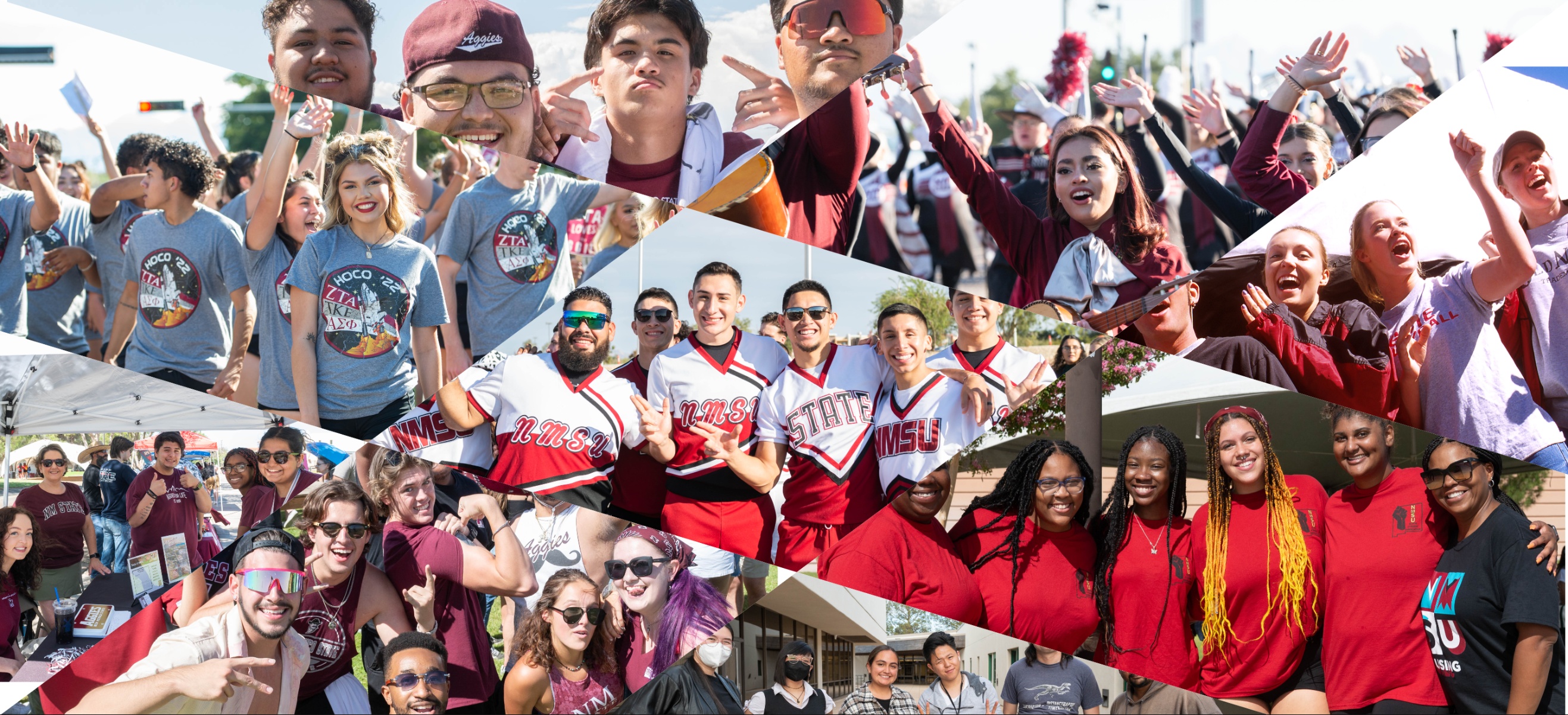Statement of Contributions to Equity, Inclusion and Diversity
For Candidates in Administrative, Faculty and Staff Searched
NMSU’s Commitment to Equity, Inclusion and Diversity
New Mexico State University is a proud and dedicated land-grant, space-grant, Hispanic Serving and Minority Serving Institution, located in the borderlands and Tribal lands regions. With priorities centering equity and inclusion, NMSU is committed to practices that leverage the insight emerging from the intersectional diversity of our students, staff, faculty, and communities that we serve and support, through outreach and Extension, research, and teaching.
About NMSU
The New Mexico State University (NMSU), university campus, is located in Las Cruces, New Mexico and is approximately 50 miles from the El Paso, Texas-Ciudad Juárez, Chihuahua, Mexico border. NMSU’s geographical location is important because as a land-grant, Hispanic-Serving/Minority-Serving institution, NMSU is situated in a prime area to recruit, retain and serve Latinx students from the borderlands region. Unique also to NMSU is that three community colleges are part of the institution: Doña Ana Community College, Alamogordo Community College, and Grants Community College. New Mexico is also home to 23 Native American tribes, pueblos and nations providing great opportunity to recruit Indigenous students and to partner with and serve tribal communities. Systemwide, approximately 64% of the undergraduate student population identifies as Hispanic/Latinx, and approximately 73% are BIPOC (Black, Indigenous, People of Color). NMSU also recognizes the diversity of our students' intersecting identities related to race, ethnicity, gender, sexual orientation, military and veteran status, ability and disability, socio-economic class, religion, and more, acknowledging the unique experiences and perspectives they bring.
Why NMSU asks for the contribution to EID Statement
NMSU seeks candidates with proven experience advancing equity, inclusion, and diversity efforts and a commitment to do so here at NMSU.

A Contributions to Equity, Inclusion and Diversity Statement helps to assess an applicant’s skills, experiences, and abilities to contribute to the work they will do in supporting NMSU’s student, staff, faculty, and community populations, it’s missions as a land-grant, space-grant, Hispanic Serving and Minority Serving institution, and who can co-create and co-sustain an equitable, inclusive, and diverse workplace.
Crafting your statement
The Contributions to Equity, Inclusion and Diversity Statement should address the following:
- an understanding of the broader practices impacting equity, inclusion, and diversity in the context of higher education, at a land-grant, space Grant, Hispanic Serving and Minority Serving institution, and groups that have been historically underrepresented and/or minoritized and marginalized,
- past contributions to equity, inclusion and diversity, and/or
- your vision for future contributions to equity, inclusion and diversity.
A statement of contributions to equity, inclusion and diversity should demonstrate the applicant’s experiences and practices of advancing equity, inclusion and diversity initiatives in curriculum and pedagogy, research, service, outreach and Extension, and/or leadership.
When creating a statement of contributions to equity, inclusion and diversity, the following understandings of equity, inclusion and diversity can inform examples:
Equity
Equity in higher education means to provide opportunities and access to resources to support the success and thriving of students, staff, faculty, and community members while recognizing their needs given their intersecting identities. Equitable practices include removing different barriers such as racism, sexism, ableism, homophobia and transphobia, xenophobia, bullying, sexual harassment, classism, citizenism and so on.
Inclusion
Inclusion is active, intentional, and ongoing engagement with diversity in curriculum, co-curriculum, research, outreach and Extension. Collaboration, mutual respect, recognition and incorporation of diverse perspectives, in the creation of policies and practices are reflections of an inclusive institution.
Diversity
In relation to “diversity,” “difference” highlights a continuum between similarities and differences in worldviews, culture and circumstance, and personal experiences. The continuum can assist in explaining how we all vary in gender, race, ethnicity, abilities, disabilities, sexual orientation, socio-economic class, first generation status, geographic region, immigration status, religion, and more.